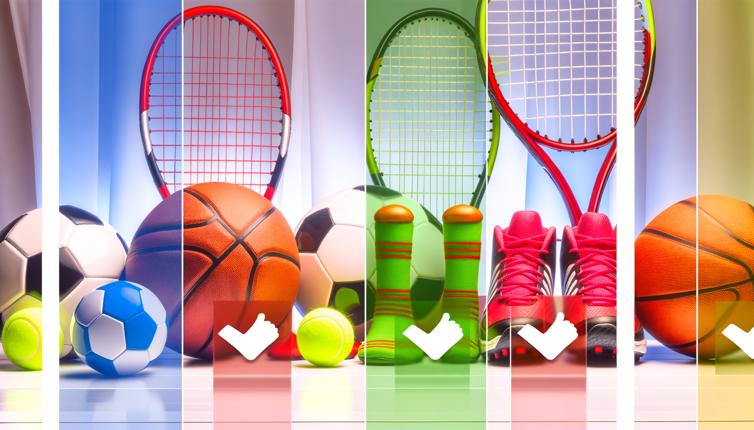1. Sport Type
The first factor to consider when choosing sports equipment is the type of sport you will be participating in. Different sports have their own specific equipment requirements, so it is important to choose equipment that is designed for your chosen sport. For example, if you plan to play basketball, you will need basketball shoes, a basketball, and appropriate clothing.,Make sure you understand the basic equipment requirements for your sport and choose equipment that is suitable for that particular activity.
2. Skill Level
Your skill level in the sport should also be taken into account when choosing sports equipment. If you are a beginner, you may not need the most advanced or expensive equipment. Starting with basic equipment that is suitable for beginners will help you learn and improve your skills without investing in high-end gear.,On the other hand, if you are an experienced athlete or have already reached a higher skill level, you may want to invest in more advanced equipment that can help enhance your performance. Consider your skill level and choose equipment accordingly.
3. Safety
Safety should always be a top priority when choosing sports equipment. Make sure that the equipment you choose is designed with safety features and meets the necessary safety standards. This is especially important for contact sports or sports that involve a risk of injury.,For example, if you are participating in a sport like football, make sure you have the appropriate protective gear such as helmets, pads, and mouthguards. Always prioritize your safety and choose equipment that provides adequate protection.
4. Comfort and Fit
Comfort and fit are crucial factors to consider when choosing sports equipment. Ill-fitting or uncomfortable equipment can not only affect your performance but also lead to injuries or discomfort during play.,When choosing equipment such as shoes, make sure they fit properly and provide the necessary support for your feet. Consider your body size and shape when selecting items like helmets, gloves, or protective gear to ensure a comfortable fit. Trying out the equipment before making a purchase is recommended if possible.
5. Quality and Durability
Investing in high-quality and durable sports equipment is a wise decision. While they may be more expensive upfront, quality equipment will be more reliable, last longer, and provide better performance in the long run.,Read reviews, do some research, and choose reputable brands or manufacturers known for producing quality sports equipment. It's better to invest in durable equipment that will withstand the demands of your sport rather than constantly replacing low-quality gear.
Conclusion
Choosing the right sports equipment is essential for maximizing performance, enjoyment, and safety. By considering factors such as sport type, skill level, safety, comfort, fit, and quality, you can make informed decisions that meet your unique needs. Remember to do thorough research, try out equipment if possible, and prioritize safety and comfort when making your selections.









